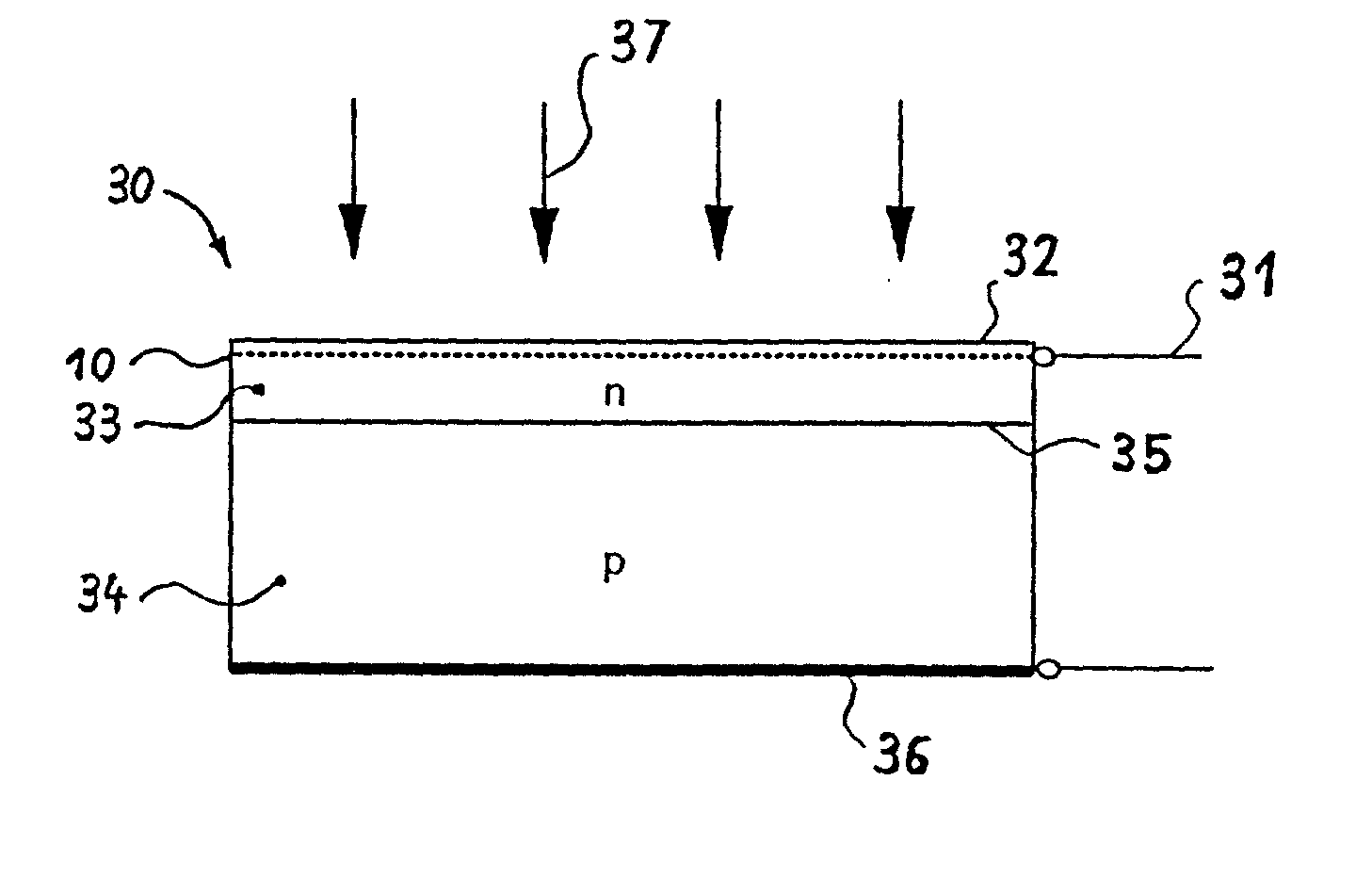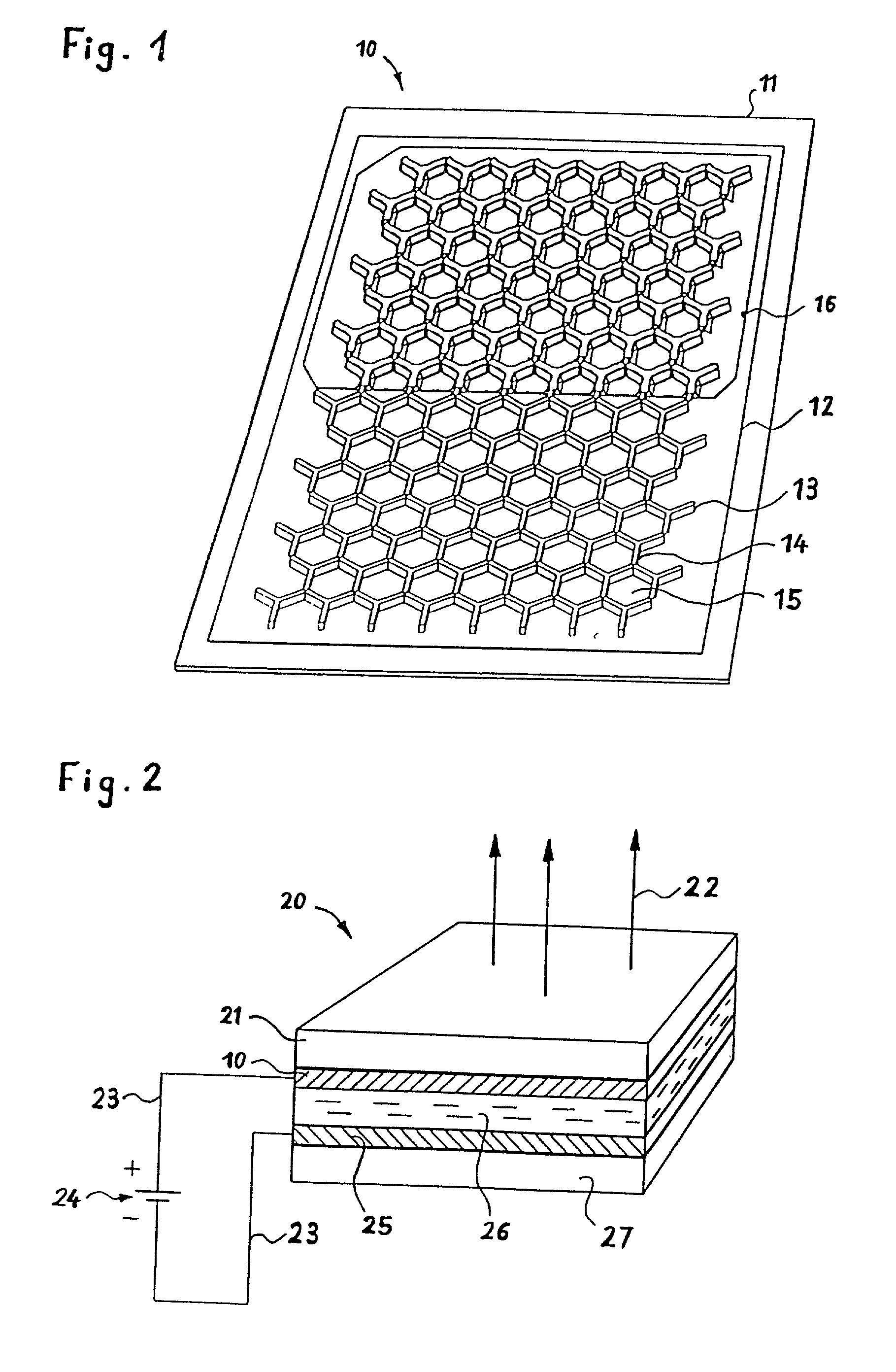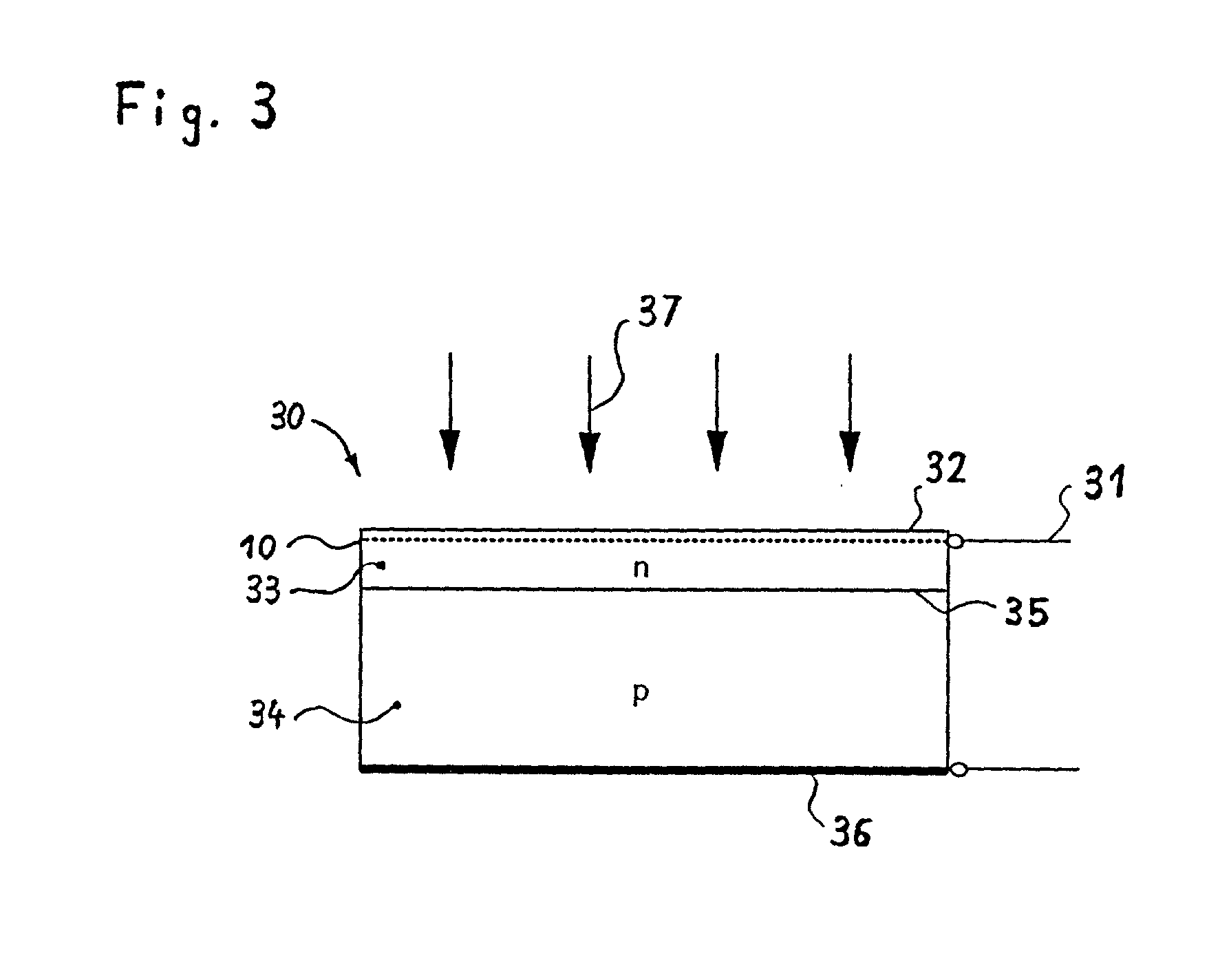Electrode for use in electro-optical devices
- Summary
- Abstract
- Description
- Claims
- Application Information
AI Technical Summary
Benefits of technology
Problems solved by technology
Method used
Image
Examples
Embodiment Construction
[0040] Before embodiments of the present invention are described, the basic elements, in accordance with the present invention, are addressed.
[0041] Electrode:
[0042] An electrode is a component of an electric circuit that connects the conventional wiring of a circuit to a conducting medium. The electrically positive electrode is called the anode and the negative electrode is called the cathode. As aforementioned the electrode of the present invention includes conductive elements and spaces between the conductive elements.
[0043] The Mie effect:
[0044] The Mie theory for a sphere provides the only practical method for calculating light-scattering properties of finite particles of arbitrary size and refraction index. The scattering theory does provide also a first-order description of optical effects in nonspherical particles, and it correctly describes many small-particle effects that are not intuitively obvious.
[0045] Excluding the case where the conductivity or the dielectric constan...
PUM
 Login to View More
Login to View More Abstract
Description
Claims
Application Information
 Login to View More
Login to View More - R&D
- Intellectual Property
- Life Sciences
- Materials
- Tech Scout
- Unparalleled Data Quality
- Higher Quality Content
- 60% Fewer Hallucinations
Browse by: Latest US Patents, China's latest patents, Technical Efficacy Thesaurus, Application Domain, Technology Topic, Popular Technical Reports.
© 2025 PatSnap. All rights reserved.Legal|Privacy policy|Modern Slavery Act Transparency Statement|Sitemap|About US| Contact US: help@patsnap.com



